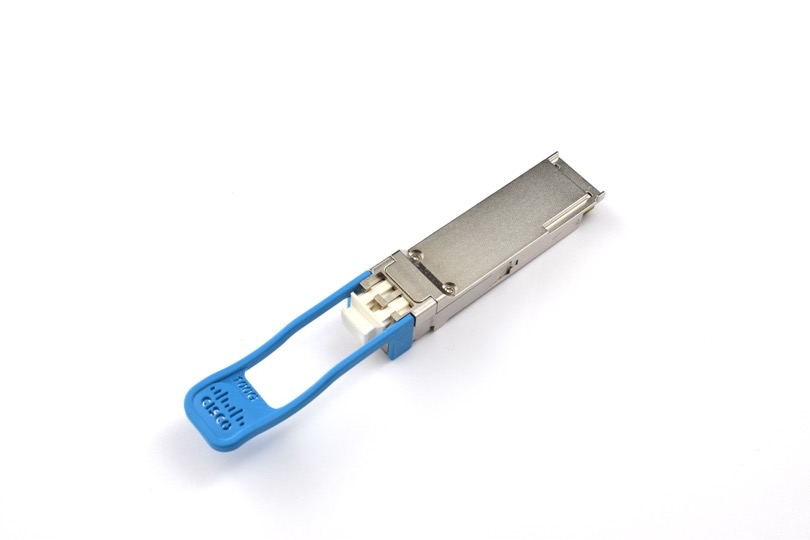- How to remove your personal info from Google Search - it's quick and easy
- Five iOS 26 features that I've been using on my Android phone for years
- Roku just revamped its TV lineup with big upgrades to picture quality and digital artwork
- TranscendAP expands SAP support
- Android Enterprise Rolls Out Security and Productivity Updates
What’s so great about LR compared to LR4 optics? – Cisco Blogs

If you’re not familiar with the new 100G LR, you may be wondering, “What’s so great about it, especially compared with 100G LR4?” The names are nearly identical and both refer to 100G pluggable optics that provide 10km reach over duplex SMF (Single-Mode Fiber). In that respect, they are equivalent. However, a little history lesson reveals that there’s much more to it than that.
Way back in what seems like the dark ages of 2010, the IEEE released 802.3ba, their first 100G optical standard. It included 100GBASE-LR4, or “100G LR4” for short. The “4” in “LR4” was there because it specified four wavelength channels, each 25G, optically multiplexed and de-multiplexed within the transceivers.
Around the same time, the industry developed the CFP pluggable form factor. It converted the 10G SERDES signals from switch and router ASICs of that era to the 25G per lane optical formats, including LR4. All this functionality took up space on the PCBs (Printed Circuit Boards) inside, making it among the larger form factors. But CFP was still useful to early adopters such as service providers whose networks needed 100G for uplinks.
Fast forward a few years, and data center folks wanted to get their hands on 100G too. By now 100G technology had some time to mature. New ideas arose, such as Cisco’s CPAK, which was much smaller than CFP because it needed less functionality. Also, by then, CMOS fabrication technology supported IC’s that could do more in a smaller area. Then the industry introduced the QSFP28 form factor pluggable module. It was even smaller than CPAK and supported the faceplate density needed for leaf-spine architectures in the data center. It was just what they needed.
QSFP28 leveraged the KR4 FEC (Forward Error Correction) algorithm (standardized in IEEE 802.3 Clause 91) that could be performed by the ASICs residing in the host platforms. FEC allowed the optical components to support a poorer BER. This way, QSFP28 pluggable modules didn’t need such high performance. With the broad release of switches, routers, and NICs containing QSFP28 ports, FEC became commonplace and subsequent 100G standards such as CWDM4 MSA and IEEE SR4 relied upon it as well.

Now we have Single-Lambda 100G pluggable optics, one of which is 100G LR. There’s no “4” because a single wavelength channel carries the full 100Gb of data, thanks to PAM4 modulation. Because PAM4 modulation is more susceptible to noise and optical impairments, it uses KP4 FEC (also specified in 802.3 Clause 91), which is a stronger algorithm than KR4. This algorithm is performed by a chip in the pluggable module itself so that it can still be used on legacy QSFP28 platforms which support only KP4 FEC.
So that’s the sequence of events in a nutshell. As for what’s so great about 100G LR from the network operator perspective: Like all Single-Lambda 100G optics, 100G LR offers seamless migration to 400G. And in a few years, 100G LR modules should be feasible in the next generation form factor for 100G pluggables, the SFP112. It should be as small as 1G SFP, 10G SFP+, and 25G SFP28, providing even higher faceplate density than QSFP28. Also, a key benefit of Single-Lambda 100G optics is manufacturability.
And like QSFP28 hosts with KR4 FEC, SFP112 hosts would perform KP4 FEC to offload functionality from the pluggable modules. Already, we see that 400G hosts support KP4 FEC for when they connect to Single-Lambda 100G optics via breakout.
Look for more posts on Single-Lambda 100G. Better yet, subscribe to the Cisco Optics blog!
And don’t forget to watch the Cisco Optics Youtube playlist.
Subscribe to the Networking blog
Share:

